Sometime around the start of college (uh, 2006?), I remember that ‘juice diets’ became all the rage. People became obsessed with drinking only juice all the time, it was extolled a new detox lifestyle, and juice bars sprouted up everywhere.
Being someone who eats whatever I please, the juice diet craze didn’t have much effect on me. I thought juice was okay. College = poor, and poor = no way was I going to spend $6.00 for a 16 oz cup of fruit smoothie at Jamba Juice. The juice I enjoyed was mostly the dining hall kind, where I’d mix the cranberry and orange juice or cranberry juice with soda water. (Current and future UCLA students take note, this is a great way to spice up the already amazing offerings of UCLA’s dining halls.)
Maybe I missed the boat on the juice diet thing, but in our travels I think we’ve discovered the nexus of juice: Colombia. This is a place where juice was never a diet fad, but a way of life and a daily drink. Sure, juice exists in other parts of Central and South America—you can find it easily in Panama, Ecuador, and Peru. But in Colombia it was fresh, never from concentrate, and available anywhere locals congregated for a meal. Walk up to any stall and you could get fresh juice straight from the fruit in any tropical flavor you feel like. And often when you thought you were done with your cup, the stall owner would top it off with the remaining juice in the blender. If you’re visiting Colombia, this is a definite can’t miss, so here’s a brief guide on getting your juice fix:
Locations
Juice can be found at almost any restaurant in Colombia, but to get the best juice head to a stall on the street. You’ll know you’re at the right place when you see the stall cart loaded down with baskets of fruit, and the =things on the counter are ice, a measuring cup, and a blender.
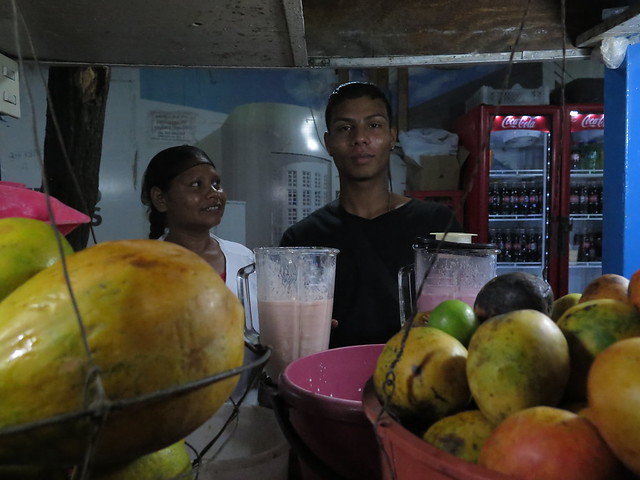
As mentioned above, these stalls tend to appear where the locals stop for a quick bite, so check out train stations or transportation hubs first. They also tend not to be in tourist areas, so if you have trouble locating one then ask the locals where to go.
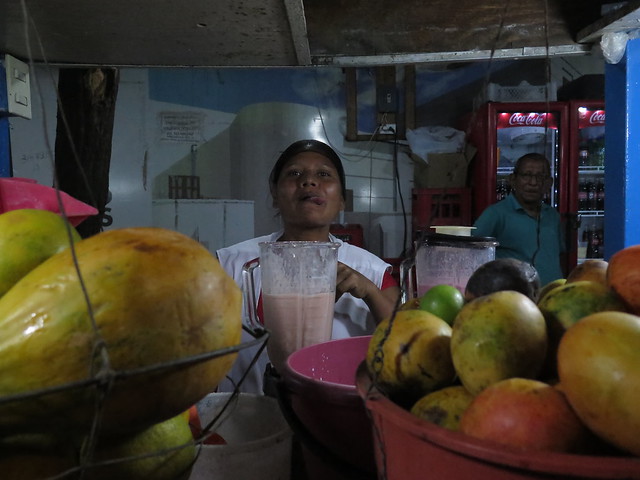
Options & Prices
Besides your option of fruit (see the list below), you have two other options you can request in your drink order: whether you get it with water or milk, and how much sugar you want in it. The default mix is juice, water, and ice, but requesting milk in place of the water (ask for “jugo con leche”) will add a creamy texture and reduce the acidic flavors. Note that in some places this goes by other names and may cost extra. For example, in Ecuador a juice with milk is known as a “batido” and usually costs an additional USD $.50 to $1.00. In Colombia, we found it was still called jugo and rarely cost extra.
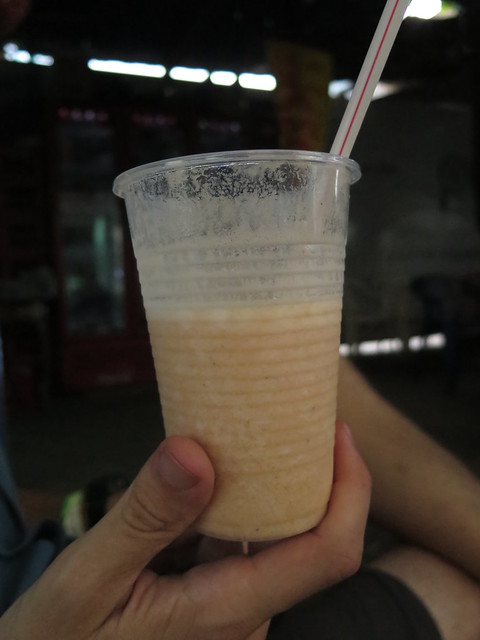
Your second option is idea for the health-conscious: you can ask for no added sugar (say “sin azucar”), a bit of added sugar (“un poquito azucar”), or half the added sugar (“medio azucar”). If you don’t ask for anything, you’ll usually get around 3-5 tablespoons of sugar added. If you ask for no sugar, you will literally get none, which can be pretty sour with the more acidic fruits. We once ordered a maracuya juice without sugar, and it was so sour that it was barely drinkable.
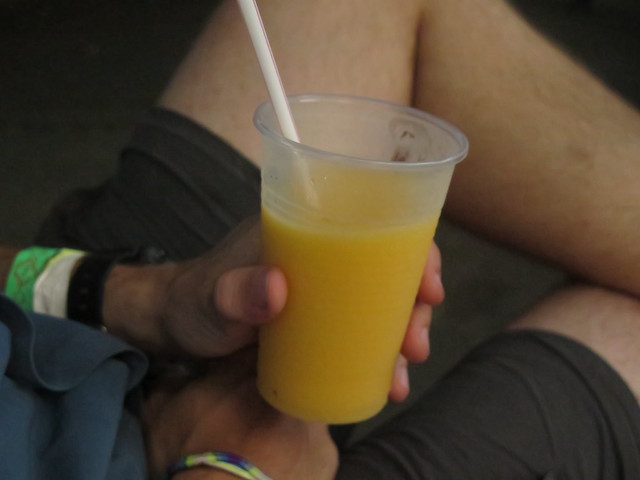
Here’s a non-exhaustive list of the tropical fruits typically offered, which vary seasonally: aguacate (avocado), banana, granadilla, guayaba (guava, my personal favorite), guanabana (soursop), limon (lime), mango, maracuya (passionfruit, Stoytcho’s personal favorite), mora (berry, usually raspberry or blackberry), naranja (orange), papaya, sandia (watermelon), tomate de arbol
Depending on the city and the options you choose, a juice will cost 2000-5000 pesos (USD $.67 to $1.66 as of December 2016). Changing the amount of sugar shouldn’t cost anything extra, while as mentioned above, getting milk instead of water sometimes incurs an extra cost.
Getting it to go
The juice stalls frequently give you juice in reusable cups, so don’t walk away with that! If you want your juice to go, ask for it “para llevar” and the stall owner will dump the whole mix of juice into a small plastic bag for you, tie it off, and hand it to you with a straw. Drink by holding the bag carefully upright shoving the straw into it to puncture the bag. Then walk around town, enjoying the juice wherever you want.

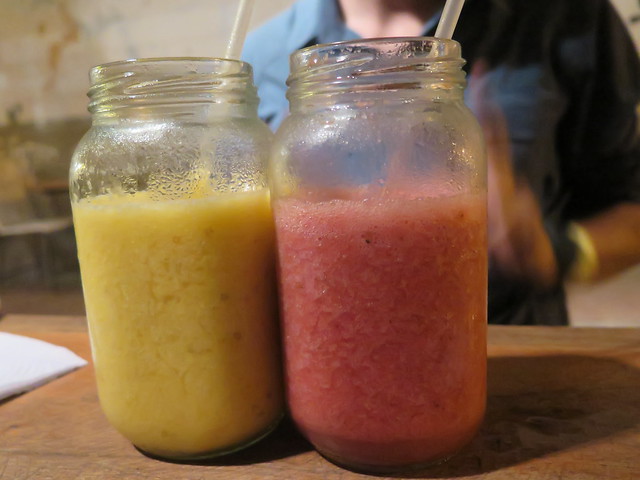
All about that passionfruit and soursop
LikeLike
Looks delicious! Did you have to woory about getting sick from the local water or ice?
LikeLike
Nah, the local ice was totally fine. A bigger concern is the local hygiene, but we never had an issue while there.
LikeLike